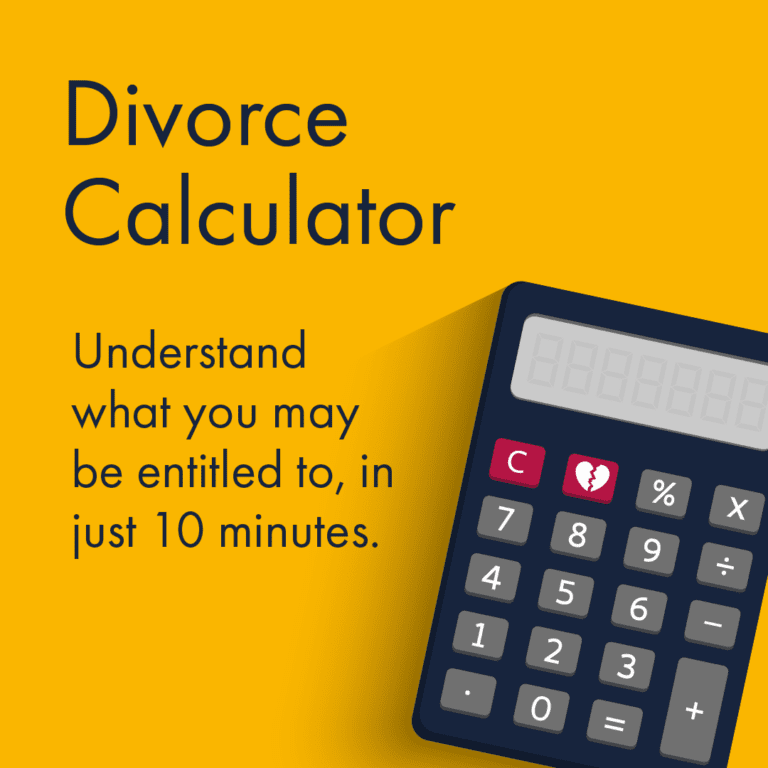Solicitors for collaborative family law
If you and your ex-partner are struggling to agree on issues arising from a separation, such as finances, property and child arrangements, collaborative family law can be a very effective process.
read moreIt differs from mediation in that each party has a collaboratively trained divorce lawyer present at all meetings, ensuring they benefit from legal advice throughout the process.
The collaborative divorce sessions take place face to face, with all parties around the table committed to reaching solutions through agreement, not the court. There’s also the opportunity to bring in other professionals such as financial advisors, accountants and valuers.
This approach can reduce time, money and stress, enabling families to work together and move forward with better relationships. The benefits of collaborative family law can be huge, especially for families with children.
At Stowe, our professional and empathetic divorce lawyers are trained in collaborative family law and we have a nationwide network of other professionals who can support you in this area.
We have offices located in major cities and towns across England and Wales, so it’s likely you’ll be able to find a solicitor near you to help you navigate your separation.
Key information on avoiding court during divorce
|
Does a divorce settlement have to go to court? |
No, over 80% of our divorce cases do not end up in court. Avoiding court proceedings can reduce the time and cost for everyone. |
|
Does mediation help with divorce? |
A mediator can help you and your ex-partner agree on how to split assets, without taking sides. |
|
What is the hybrid mediation process? |
You and your ex-partner are not in the same room but you each have access to your individual lawyers. The trained mediator will then move between each of you. |
|
What is the collaborative family law process? |
Each person appoints their own collaboratively trained lawyer and you and your respective lawyers all meet together to work things out face to face. |
|
Should I take my divorce to arbitration? |
Involving arbitration in the divorce process can be more effective than going through lengthy and expensive court proceedings. |
Our other out of court divorce services
 Use the calculator
Use the calculator
Why use a collaborative law approach?
The key goal of collaborative family law is to achieve a settlement that best meets the specific needs of both parties and their children in a safe space without the underlying threat of going to court.
read moreIf you’re looking to avoid conflict as you and your ex-partner navigate a separation or divorce, using collaborative family law could help you come to a mutual agreement. Below are just some of the benefits of this process:
- Improves communication
- Access advice from divorce lawyers and other professionals
- A space to share ideas openly to reach mutually acceptable solutions
- Helps both parties make informed decisions
- Quicker and more cost-effective than court
- Reduces conflict, stress and anxiety
- Allows you and your ex-partner to take control of the situation rather than a judge deciding the outcome
Meet our collaborative family law experts
We offer an award-winning service
Why choose Stowe Family Law?
As the only national law firm fully dedicated to family matters, our expert team offers professional advice so you can make a fully informed decision about your divorce.
We are proud to be rated ‘Excellent’ on Trustpilot. Check out our reviews to see what our previous clients have said about our service.
We feature in The Legal 500 rankings and are fully authorised and regulated by the Solicitors Regulation Authority (SRA).
We keep you informed. Take a look at our support section, which features a range of helpful guides, focusing on important topics including finances and mediation.
Let's ask Legal 500
Senior Partner of the firm, Julian Hawkhead received a special mention: ‘I trust Julian and value his opinion and advice. I feel he has my best interests at heart, but at the same time, tells it how it is.’Let's ask Legal 500
Emma Newman heads up Stowe Family Law in Esher and is always approachable, knowledgeable, and very easy to get on with. She is a fierce advocate for her client, but can retain sight of the ‘bigger picture’. I have referred clients to Emma in the past.Let's ask E K
I had to change my solicitors, that's why I met Kate Bouwmeester at Stowe Family Law. I wish I had her as my solicitor from the very beginning. My financial matter was handled by Kate. Also, she gave me advice on children matters. Kate understood what my expectations were and honestly handled the matter cost-effectively. Kate had been brilliant whe… Read moren it came to clarity and details. She was quick with responses. I would highly recommend Kate Bouwmeester if you are looking for a solicitor for your marital conflict. Unlike some other solicitors, Kate Bouwmeester is able to advise on all matters - divorce, finances and children. I believe that these three matters are linked to one another and having one solicitor, rather than two, for all these matters is more efficient and cheaper. Thank you Kate for helping meLet's ask Legal 500
Sebastian Burrows has been faultless in every aspect of dealing with my case. He has advised me in a professional, knowledgeable, supportive way: always with consideration of the emotive and sensitive situation that I am dealing with. I cannot recommend him highly enough.Let's ask Mr L
Thank you very much for all your hard effort, wise counsel, and meticulous attention to detail. You have handled things very professionally and reassured me at times when I have been expecting the worst. It’s been a pleasure working with you.Let's ask Mr C
Angela and her team were always supportive, informative and professional. I felt advice was realistic and balanced. My subject matter was sensitive and was always handled in the appropriate manner. I would happily recommend them to anyone who needed their services.Let's ask Legal 500
Stowe Family Law are knowledgeable and provide excellent client service, which ensures the best experience of the Family Court for those going through extremely challenging times.Common questions about collaborative family law
Common questions about collaborative family law
-
What happens during the collaborative family law process?
Once you and your ex-partner agree to pursue collaborative law during your divorce or separation, we can help you take the first steps towards coming to a resolution.
First, you will each need to hire a collaborative family law solicitor who will be present at all of your face-to-face meetings. An initial consultation will allow your lawyer to gather all of the information they need about your circumstances and what you would like to achieve from the process.
From this point, you and your ex-partner will attend meetings accompanied by your representatives. A contract will be signed stating that both parties commit to resolving the issues out of court, then negotiations can begin.
Once you reach an agreement, your lawyers will create a document outlining the finer details which you will both sign. Although this document isn’t legally binding, if you so desire, you could ask your lawyers to draft up a consent order which would make your agreement legally binding.
If you are unsure, your dedicated solicitor can advise on the best course of action.
-
How much does collaborative family law cost?
While the process of working with collaborative lawyers isn’t free, it’s a cheaper and quicker alternative than going to court to resolve your issues.
Your collaborative family law solicitor can discuss the exact cost of the process with you. As it’s hard to say how long the process will last and how long you will need representation from a lawyer, the fees will vary on a case-by-case basis.
-
What's the difference between mediation and collaboration?
There are several key differences between mediation and collaboration methods for resolving issues between separating or divorcing couples.
In mediation, a neutral figure acts as the mediator to help you and your ex-partner come to an agreement about how you want to proceed and try to resolve issues you are facing during your separation.
With a collaborative approach, a lawyer will represent their client and offer guidance for issues that may be more complicated to navigate, such as financial or custody agreements.
Having legal representation will make the process easier for the client too, as solicitors will have a better understanding of how to evaluate proposals and negotiations.
Another key difference between both methods is the cost. Mediation is often the most cost-effective process but paying for the more expensive collaboration approach means you have solid legal advice every step of the way. Collaboration law can also take longer to complete, which could result in increasing costs.
Latest advice
Newsletter Sign Up
Sign up for advice on divorce and relationships from our lawyers, divorce coaches and relationship experts.
Privacy Policy




















